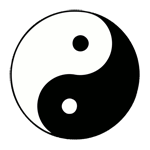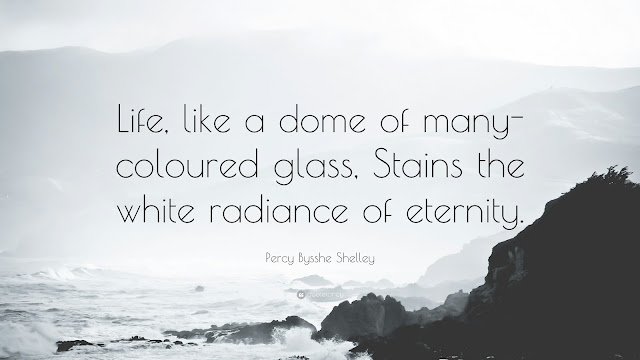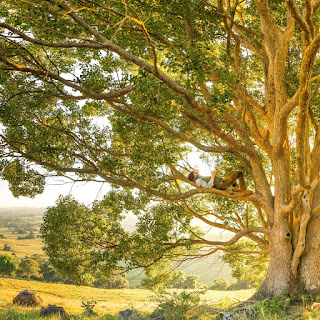 | |
| Yin-Yang Symbol holds its route in Taosim |
If we try to concentrate upon the above symbol of Yin-Yang, we may reach four stages :
- examination
- discrimination
- joyful peace
- simple awareness of individuality
The Taoist Concept of Yin and Yang
Taoist says
All things exist as a contrast of opposites. We call these opposites Yin and Yang. We cannot conceive of these opposites independent of each otherAs a box can be formed by designing and shaping one or more material and the box has two fundamental things, one is wall and other is empty space. Both are necessary to form a box. They define each other. Without walls, the space inside is part all space and cannot be distinguished. Without the space inside, it would make no sense to call what remains in walls because it would just be a solid block.
Opposites define each other. The very words we use to describe things have no meaning without their opposites. If we breath in there must be breath out. Taoists refer this opposing quality as Yin and Yang.
Yin and Yang literally mean dark side and sunny side of a hill, the two complementary forces that make up all aspects and phenomena of life.
Yin is a symbol of earth, femaleness, darkness, passivity and absorption. It is present in even numbers, in valleys and streams and is represented by the tiger, the colour orange and a broken line.
Yang is conceived of as heaven, maleness, light, activity and penetration. It is present in odd numbers, in mountains and is represented by the dragon, the colour azure and an unbroken line.The both are said to proceed from the Great Ultimate, their interplay on one another (as one increases the other decreases) being a description of the actual process of the universe and that is in it. In harmony the two are depicted as the light and dark halves of a circle.
 |
|
Photo by paul
morris on Unsplash
|
What is this Cosmos ? What is it made of ?
Indian Philosophy teaches us the cosmos is made of Prakriti the nature, the elemental, undifferentiated stuff of mind and matter. Nature is defined as the power or effect of Brahman - in the sense that heat is a power or effect of fire. Just as heat cannot exist apart from the fire which causes it, so Nature could not exist apart from Brahman. The two are extremely inseparable. The later puts forth and causes the former.
Why does Brahman cause Prakriti ?
This is a question which cannot possibly be answered in the terms of any man-made philosophy. For the human intellect is itself within Prakriti and therefore cannot comprehend its nature. A great seer may experience the nature of the Brahman-Prakriti relationship while she/he is in the state of perfect yoga, but she/he cannot communicate her/his knowledge to us in terms of logic and language because, from an absolute standpoint, Prakriti does not exist. It is not the Reality- and yet not other than the Reality. It is the Reality as it seems to our human senses- the Reality distorted, limited, misread.
We may accept, as a working hypothesis, the seer's assurance that this so, but our intellect reel away, baffled, from the tremendous mystery. Lacking super-conscious experience, we have to be content with picture talk. We come back gratefully to Shelley's famous lines :
 |
| https://quotefancy.com/quote/1050403/Percy-Bysshe-Shelley-Life-like-a-dome-of-many-coloured-glass-Stains-the-white-radiance-of |
Philosophically, they may be rather vague- it is not clear exactly what Shelley means by 'Life' - but they do provide us with a useful and beautiful image; if we think of Brahman as 'the white radiance' , then Prakriti is represented by the colours which disguise the real nature of its beams.
Chapter 2 of Tao Te Ching
As soon as beauty is known by the world as beautiful, it becomes ugly.
As soon as virtue is being known as something good, it becomes evil.
Therefore Being and Non-being give birth to each other.
Difficult and Easy accomplish each other.
Long and Short form each other.
High and Low distinguish each other.
Sound and Tone harmonize each other.
Before and After follow each other as a sequence.
Realizing this, the saint performs effortlessly according to the natural Way without personal desire, and practices the wordless teaching thru one's deeds.
The saint inspires the vitality of all lives, without holding back.
He nurtures all beings with no wish to take possession of.
He devotes all his energy but has no intention to hold on to the merit.
When success is achieved, he seeks no recognition.
Because he does not claim for credit, hence shall not loose it.
 |
| http://cargofilm-releasing.com/films/becoming-who-i-was/caption |
This chapter discusses some wisdom of dualities. The sages use this knowledge of dualities to live their lives with the Tao.
Wu-Wei known as unattached action, effortless action, or the action of no-action is big deal concept of Taoism. It can be defined nearly as living in the moment, being relaxed and not obsessing over outcomes.
Final Thought
To sum all this up briefly, creation is here described as an evolution outward, from undifferentiated consciousness into differentiated consciousness, from mind into matter. Pure consciousness is, as it were, gradually covered by successive layers of ignorance and differentiation, each layer being grosser and thicker than the one below it, until the process ends on the outer physical surface of the visible and tangible world.
It is necessary to keep this idea of evolution clearly in mind if we are to understand the process. The process is meditation. For meditation is evolution in reverse. Meditation is a process of devolution. Beginning at the surface of life, the meditative mind goes inward, seeking always the cause behind the appearance and then the cause behind the cause, until the innermost Reality is reached. When it is practiced intensely, it can take the mind very far, right out to the ultimate borders of undifferentiated matter.
Related Articles on Ancient Chinese Wisdom
 |
How The Movie Rock On and it's Sequel encompass the essence of Taoist Philosophy |
 |
The Wisdom of Wei Wu Wei a Secret Art of Non-Doing |
 |
A Journey of a Thousand Miles Begins With a Single Step - #Beleive |
 |
What We perceive on the Yin Yang Symbol |










No comments:
Post a Comment